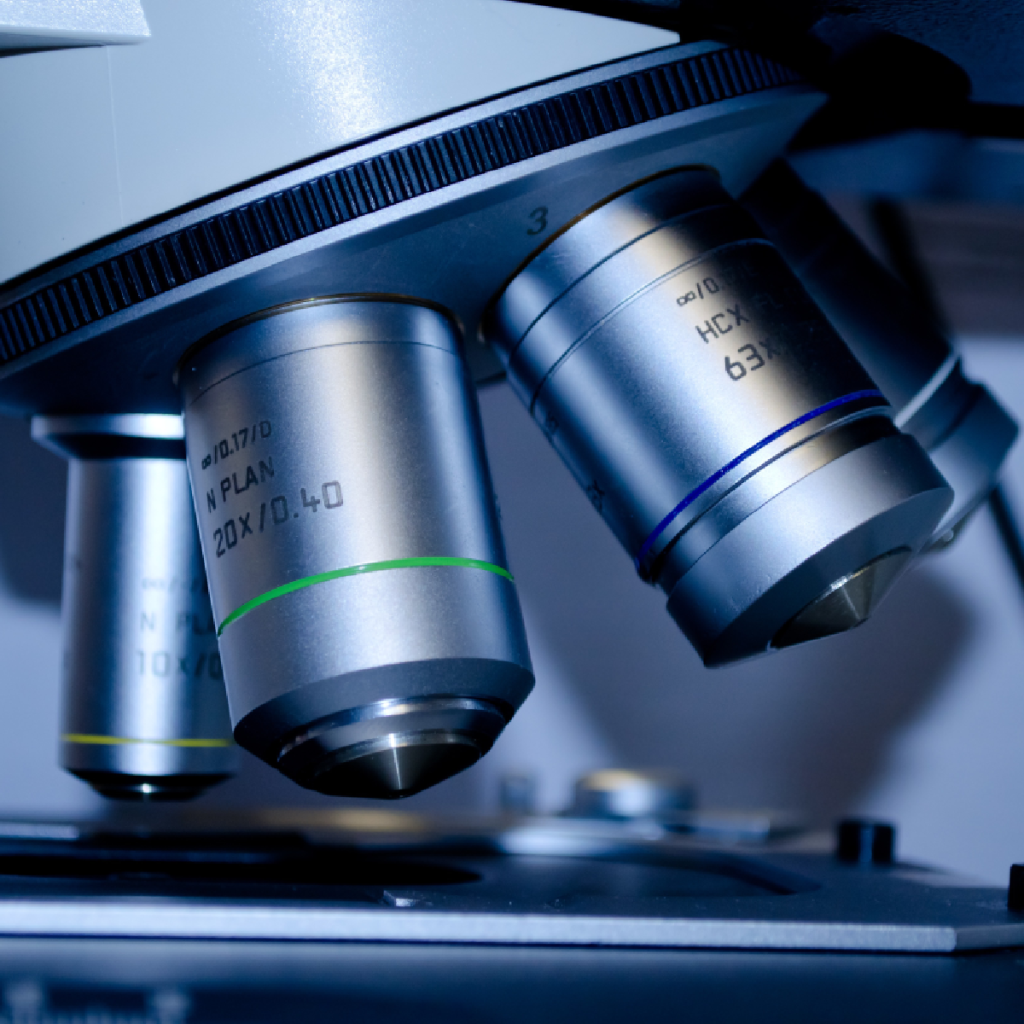Can NMN Improve Cellular Energy Production?
08/08/2023

Cellular energy production is a crucial process that ensures the proper functioning of all cells in your body. The production of energy is tightly regulated and carried out by tiny powerhouses called mitochondria. In recent years, a compound called Nicotinamide Mononucleotide (NMN) has gained attention for its potential role in enhancing cellular energy production. In this article, we will delve into the science behind cellular energy production, understand the role of NMN, explore the connection between NMN and energy production, review scientific studies, and discuss the potential benefits and risks of NMN supplementation.

Understanding Cellular Energy Production
The process of cellular energy production is intricate and relies on several cellular components, particularly mitochondria. These organelles are responsible for generating adenosine triphosphate (ATP), which is the main source of energy used by cells. Mitochondria play a crucial role in cellular respiration, a series of biochemical reactions that convert nutrients into usable energy.
Let's dive deeper into the fascinating world of cellular energy production and explore the intricate mechanisms that occur within mitochondria.
The Role of Mitochondria in Energy Production
Mitochondria are often referred to as the powerhouses of the cell. They are double-membraned structures that contain specialized enzymes and proteins involved in energy production. Through a process called oxidative phosphorylation, mitochondria generate ATP by extracting energy from nutrients, such as glucose and fatty acids. This energy-rich molecule is then used by cells to perform various functions necessary for proper physiological functioning.
Within the mitochondria, numerous enzymes and protein complexes work together in a highly coordinated manner to ensure efficient energy production. One key player is cytochrome c oxidase, an enzyme located in the inner mitochondrial membrane that plays a crucial role in the electron transport chain. This enzyme facilitates the transfer of electrons, allowing for the production of ATP.
Additionally, the inner mitochondrial membrane is rich in cardiolipin, a unique phospholipid that helps maintain the structural integrity of the electron transport chain complexes. This phospholipid plays a crucial role in ensuring the proper functioning of the respiratory chain, ultimately leading to ATP synthesis.
The Process of Cellular Respiration
Cellular respiration consists of three main stages: glycolysis, the citric acid cycle (also known as the Krebs cycle), and oxidative phosphorylation. Each stage is a complex series of reactions that work together to extract energy from nutrients and convert it into ATP.
Glycolysis, the first stage of cellular respiration, takes place in the cytoplasm of the cell. During glycolysis, glucose is broken down into pyruvate molecules, producing a small amount of ATP. This initial step is crucial for providing the necessary substrates for the subsequent stages of cellular respiration.
The pyruvate molecules produced during glycolysis are then transported into the mitochondria, where they undergo further oxidation in the citric acid cycle. This cycle, also known as the Krebs cycle, is a series of enzymatic reactions that result in the release of carbon dioxide and the generation of reduced coenzymes, including NADH and FADH2. These coenzymes serve as carriers of high-energy electrons, which are essential for ATP synthesis.
The final stage of cellular respiration is oxidative phosphorylation, which takes place in the inner mitochondrial membrane. Here, NADH and FADH2 donate their electrons to the electron transport chain. This chain consists of a series of protein complexes that facilitate the transfer of electrons, releasing energy in the process.
As electrons pass through the electron transport chain, energy is released and used to pump protons across the mitochondrial inner membrane, creating an electrochemical gradient. This gradient acts as a driving force for ATP synthesis by ATP synthase, an enzyme embedded in the inner membrane. ATP synthase harnesses the energy from the proton gradient to convert adenosine diphosphate (ADP) into ATP, the energy currency of the cell.
By understanding the intricacies of cellular energy production, we gain insight into the vital processes that enable our cells to function properly. The mitochondria, with their remarkable abilities, play a central role in ensuring that our cells have the energy they need to carry out essential tasks, from muscle contraction to DNA replication.
What is NMN?
Now that we have a basic understanding of cellular energy production, let's explore the compound that has generated quite a buzz in recent years - Nicotinamide Mononucleotide (NMN). NMN is a precursor of NAD+ (Nicotinamide Adenine Dinucleotide), a coenzyme involved in numerous cellular metabolic reactions. NAD+ is essential for the proper functioning of enzymes called sirtuins, which play a role in regulating energy metabolism, DNA repair, and many other cellular processes.
The Biological Role of NMN

NMN is a key player in the synthesis of NAD+. It is converted into NAD+ through the action of specific enzymes in the body. By increasing NAD+ levels, NMN may indirectly support the activity of sirtuins and other NAD+-dependent enzymes involved in energy production and cellular maintenance.
How NMN is Produced in the Body
NMN is produced naturally in the body from various precursors, including dietary sources such as fruits, vegetables, and animal products. However, the levels of NMN decrease with age, which has led to interest in NMN supplementation as a potential strategy to support cellular energy production.
As we delve deeper into the fascinating world of NMN, it is important to understand the intricate mechanisms by which this compound functions in the body. NMN acts as a crucial link in the chain of cellular energy production, ensuring that the necessary components are available for optimal metabolism. By serving as a precursor to NAD+, NMN sets in motion a series of reactions that ultimately lead to the generation of ATP, the energy currency of the cell.
Furthermore, NMN's role in supporting sirtuin activity cannot be overstated. Sirtuins are a group of proteins that have been dubbed the "guardians of the genome" due to their involvement in DNA repair and maintenance. These enzymes rely on NAD+ to carry out their functions effectively. By increasing NAD+ levels, NMN indirectly enhances the activity of sirtuins, thereby promoting cellular health and longevity.
But how exactly is NMN produced within the body? The synthesis of NMN involves a complex series of enzymatic reactions that occur in various tissues and organs. One of the key enzymes involved is called nicotinamide phosphoribosyltransferase (NAMPT), which catalyzes the conversion of nicotinamide, a form of vitamin B3, into NMN. This conversion process is tightly regulated and influenced by factors such as diet, exercise, and overall health status.
Interestingly, while NMN can be obtained from dietary sources, its levels tend to decline with age. This decline is thought to be due to a combination of factors, including reduced production and increased degradation of NMN within the body. As a result, there has been growing interest in NMN supplementation as a means to counteract this age-related decline and support optimal cellular function.
In recent years, research on NMN has gained significant momentum, with numerous studies exploring its potential benefits and applications. Preliminary findings suggest that NMN supplementation may have positive effects on various aspects of health, including energy metabolism, mitochondrial function, and even lifespan extension in certain animal models.
As the scientific community continues to unravel the mysteries of NMN, it is becoming increasingly clear that this compound holds great promise for improving cellular health and overall well-being. With its pivotal role in NAD+ synthesis and sirtuin activation, NMN represents a fascinating avenue for further exploration and potential therapeutic interventions.
The Connection Between NMN and Energy Production
Research suggests that NMN plays a crucial role in the regulation of energy production by affecting different aspects of mitochondrial function and NAD+ metabolism.
But what exactly is NMN? Nicotinamide mononucleotide (NMN) is a molecule that acts as a precursor for nicotinamide adenine dinucleotide (NAD+) synthesis. NAD+ is a coenzyme found in all living cells and is involved in various metabolic processes, including energy production.
NMN and NAD+: A Crucial Relationship
NMN acts as a precursor for NAD+ synthesis. By increasing NMN levels, cells have a greater supply of this precursor, which can be converted into NAD+. Elevated NAD+ levels, in turn, can stimulate the activity of sirtuins and other NAD+-dependent enzymes involved in energy metabolism, potentially improving cellular energy production.
Sirtuins are a class of proteins that have been linked to various health benefits, including longevity. They are known to regulate cellular processes such as DNA repair, gene expression, and metabolism. By increasing NAD+ levels, NMN may enhance the activity of sirtuins, leading to improved cellular energy production and overall cellular health.
How NMN Influences Mitochondrial Function
Studies have shown that NMN administration can enhance mitochondrial function by increasing ATP production, improving mitochondrial respiration, and promoting mitochondrial biogenesis (the process of creating new mitochondria). These effects may lead to improved cellular energy production and overall cellular health.
ATP (adenosine triphosphate) is often referred to as the "energy currency" of the cell. It is a molecule that stores and transports energy within cells. By increasing ATP production, NMN can provide cells with more energy to carry out their various functions.
Mitochondrial respiration is the process by which mitochondria convert nutrients into ATP through a series of chemical reactions. NMN has been shown to improve mitochondrial respiration, allowing for more efficient energy production.
Furthermore, NMN has been found to promote mitochondrial biogenesis, which is the creation of new mitochondria within cells. This process is crucial for maintaining optimal cellular energy production, as more mitochondria means more ATP can be generated.
In conclusion, NMN plays a vital role in the regulation of energy production by influencing mitochondrial function and NAD+ metabolism. By increasing NMN levels, cells may experience improved ATP production, enhanced mitochondrial respiration, and increased mitochondrial biogenesis, ultimately leading to enhanced cellular energy production and overall cellular health.
Scientific Studies on NMN and Energy Production
Several studies have explored the effects of NMN supplementation on energy production, both in animal models and human trials.
Animal Studies and Their Implications
Animal studies have shown promising results, demonstrating that NMN supplementation can improve mitochondrial function, increase NAD+ levels, enhance energy metabolism, and potentially extend lifespan. While these findings are exciting, it's important to note that translating these results to humans requires further research.

Human Trials: Results and Limitations
Preliminary human trials have assessed the safety and potential benefits of NMN supplementation. While these trials have shown that NMN is well-tolerated and increases NAD+ levels in humans, more extensive studies are needed to determine its long-term effects on energy production and overall health.
Potential Benefits and Risks of NMN Supplementation
Beyond its potential role in improving energy production, NMN supplementation has been associated with other possible health benefits. However, it's essential to consider the potential risks and limitations before incorporating NMN supplements into your routine.
Possible Health Benefits Beyond Energy Production
Preliminary research suggests that NMN may have positive effects on numerous age-related conditions, including cardiovascular health, cognitive function, and metabolic disorders. While these findings are promising, more studies are needed to validate these potential benefits.
Side Effects and Safety Concerns
Based on current research, NMN supplementation appears to be safe and well-tolerated. However, as with any supplement, individual responses may vary. It's essential to consult with a healthcare professional before starting NMN supplementation, especially if you have any underlying medical conditions or are taking medications.
Conclusion
Can NMN improve cellular energy production? The answer lies in its potential role as a precursor for NAD+ synthesis and its influence on mitochondrial function. While there is promising scientific evidence supporting the connection between NMN and energy production, it's important to note that further research is needed to fully understand the long-term effects and validate the potential benefits of NMN supplementation. As with any supplement, it's always best to consult with a healthcare professional before incorporating NMN into your wellness routine.

 Back to Blog
Back to Blog